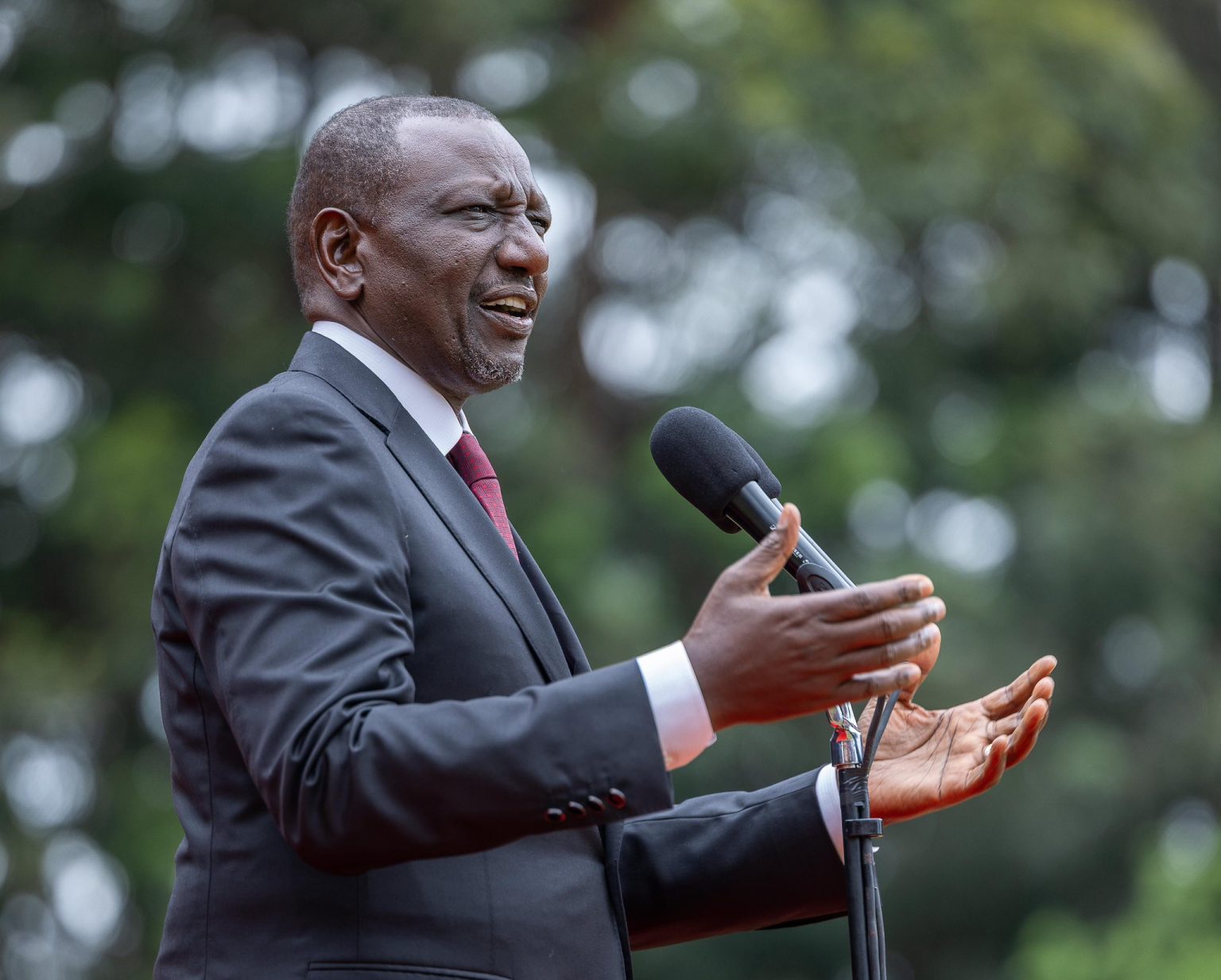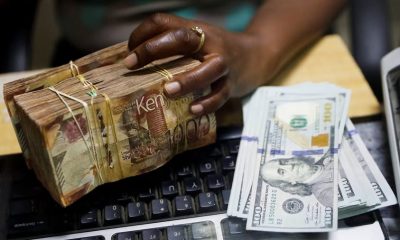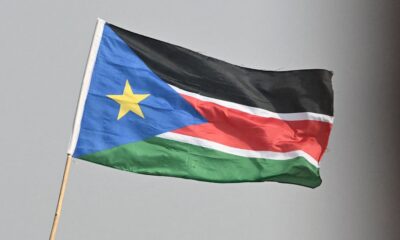Business
Kenya Reduces Chinese Debt By Sh23.3B Despite Revenue Shortfalls

Nairobi’s debt service payments to Beijing drop 15.3% as stable shilling and falling global rates provide fiscal relief
Kenya achieved a rare financial reprieve in its debt obligations to China, with payments dropping by Sh23.33 billion in the financial year ended June 2025, providing much-needed breathing room for a government grappling with persistent revenue challenges.
Treasury documents reveal that Nairobi paid Chinese lenders Sh129.35 billion during the period, down from Sh152.69 billion in the previous year—marking the first decline in Chinese debt service since the pandemic-hit 2020/21 financial year.
The 15.3% reduction was driven by a combination of favorable external factors, including the shilling’s stability against the US dollar and declining global interest rates as central banks worldwide eased monetary policy amid cooling inflation pressures.
Breaking Down the Numbers
Principal repayments fell 11.80% to Sh88.61 billion, while interest obligations dropped more dramatically by 21.99% to Sh40.74 billion from Sh52.20 billion.
The bulk of these payments flowed to the Export-Import Bank of China, which financed the controversial Standard Gauge Railway (SGR) project.
The timing proved fortuitous for Kenya’s fiscal position.
The government had initially budgeted Sh148.04 billion for Chinese debt service but ended up spending only Sh129.35 billion, creating unexpected savings of Sh18.69 billion.
Currency stability played a crucial role in this outcome.
The Kenyan shilling averaged 129.87 units against the US dollar between July 2024 and January 2025, significantly stronger than the 149.52 units recorded during the same period the previous year.
The shift in global interest rate benchmarks also worked in Kenya’s favor.
Chinese loans, typically denominated in US dollars, carry floating interest rates set at 3.6% or 3.0% above reference rates.
The transition from the retired London Interbank Offered Rate (LIBOR) to the Secured Overnight Financing Rate (SOFR) coincided with a broader easing cycle.
SOFR dropped to approximately 4.32% in January 2025 from 5.32% in the same month of 2024, directly reducing Kenya’s interest burden on these dollar-denominated facilities.
The Export-Import Bank of China funded roughly 90% of the more than Sh500 billion Kenya invested in constructing nearly 700 kilometers of the SGR from Mombasa to Suswa.
This infrastructure push, initiated under former President Uhuru Kenyatta’s administration around 2014, marked a significant shift in Kenya’s borrowing strategy after the country graduated to lower-middle-income status, limiting access to concessional development financing.
However, the SGR project has faced persistent criticism over its financial viability.
Research fellow Fergus Kell from London’s Chatham House has noted the railway’s “inflated construction costs and consistent failure to generate revenue despite government intervention to mandate cargo traffic.”
The debt reduction comes at a critical juncture for Kenya’s public finances.
With public debt hitting a record Sh11.35 trillion largely driven by domestic borrowing, any relief in external obligations provides valuable fiscal space for the current administration.
Kenya’s relationship with Chinese lenders has evolved significantly since the borrowing boom of the mid-2010s.
The country last signed a debt agreement with Beijing in 2019, securing funding for the Konza Data Centre and Smart City Facilities ($166.7 million) and the Kenya Power Transmission Expansion Project ($83.3 million).
Beijing’s appetite for African lending has cooled considerably following pandemic-induced revenue shocks across the continent, with Chinese policy banks becoming more cautious about debt sustainability in borrower countries.
While the Sh23.3 billion reduction provides temporary relief, Kenya’s overall debt trajectory remains a concern.
The government continues to face the challenge of balancing infrastructure development needs with fiscal sustainability, particularly as revenue collection remains under pressure.
The confidential nature of Chinese loan agreements, as highlighted by AidData research, continues to limit transparency around the true cost and terms of these obligations.
This opacity makes it difficult for taxpayers to fully understand the long-term implications of these debts.
For now, Kenya can count the combination of currency stability and favorable global interest rates as a rare positive development in its complex debt management landscape.
Whether this trend continues will largely depend on external factors beyond the government’s direct control—a reminder of the vulnerabilities inherent in dollar-denominated debt obligations.
Kenya Insights allows guest blogging, if you want to be published on Kenya’s most authoritative and accurate blog, have an expose, news TIPS, story angles, human interest stories, drop us an email on [email protected] or via Telegram
-

 Business1 week ago
Business1 week ago‘They’re Criminals,’ Popular Radio Presenter Rapcha The Sayantist Accuses Electric Bike Firm Spiro of Fraudulent Practices
-

 Business7 days ago
Business7 days agoIt’s a Carbon Trading Firm: What Kenyans Need to Know About Spiro’s Business Model Amid Damning Allegations of Predatory Lending
-

 Business6 days ago
Business6 days agoManager Flees Safaricom-Linked Sacco As Fears Of Investors Losing Savings Becomes Imminent
-

 Investigations1 week ago
Investigations1 week agoDisgraced Kuscco Boss Arnold Munene Moves To Gag Media After Expose Linking Him To Alleged Sh1.7 Billion Fraud
-

 News2 weeks ago
News2 weeks agoTemporary Reprieve As Mohamed Jaffer Wins Mombasa Land Compensation Despite Losing LPG Monopoly and Bitter Fallout With Johos
-

 News7 days ago
News7 days agoWoman Accused in High Defamation Blames AI As Case Exposes How Mombasa Billionaire Mohamed Jaffer Allegedly Sponsored Smear Campaign Linking Joho’s Family To Drug Trafficking
-

 Investigations2 weeks ago
Investigations2 weeks agoFrom Daily Bribes to Billions Frozen: The Jambopay Empire Crumbles as CEO Danson Muchemi’s Scandal-Plagued Past Catches Up
-

 Africa1 week ago
Africa1 week agoDisgraced Oil Trader Idris Taha Sneaks Into Juba as Empire Crumbles









